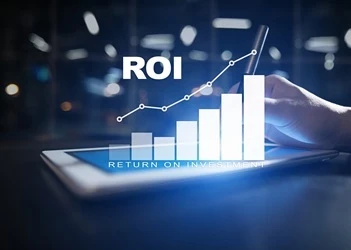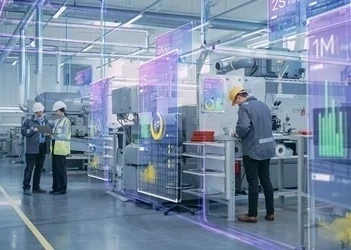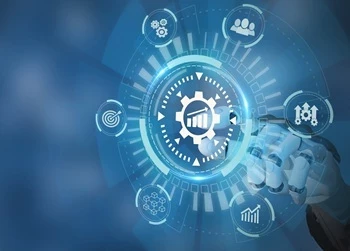How to select the right process intelligence tool
A look at Forrester's inaugural Wave on process intelligence software
Add bookmark
Before the emergence of the process intelligence software in the early 2000’s, terms such as process mining were known only in academia. These solutions, however, have grown so much in popularity that Forrester recently published its first-ever Forrester Wave™ on process intelligence software. In the report, they evaluate 14 vendors against 28 criteria which they grouped into three categories: Current Offering, Strategy and Market Presence.
What is process intelligence software?
In the Forrester report, the analyst firm defines the assessed category of process intelligence software as “Software products that provide analytics about an organization’s processes that are operated by humans as well as implemented in IT systems. Process analytics is mainly (but not wholly) based on task and process mining capabilities. Process intelligence software helps users decide how to improve process performance.“
Not only is it important to combine process and task mining to merge data from front-end systems (i.e. task mining) with data from transactional back-end systems (i.e. process mining), according to the report, “…process intelligence software customers should look for vendors that…[s]upport process transformation beyond preparation for automation.”
In my opinion, many of the analyzed vendors use the insights gained through process mining exclusively for automation purposes, neglecting the enormous potential that this area offers for process transformation and redesign. I believe that is why the report's author, analyst Bernhard Schaffrik, emphasizes, “customers should look for vendors that provide a wide variety of process analysis functionalities, such as simulation, that enable process improvement beyond just automating manual tasks.“
What are some of Forrester’s evaluation criteria for the process intelligence software vendors?
Realizing the full potential of process intelligence requires a broad range of capabilities that organizations should keep in mind when selecting process intelligence software. Below I have outlined some of Forrester’s evaluation criteria with selected subcriteria and my take on each:
- Setup and Preparation. Any process intelligence journey begins with an appropriate "setup and preparation" phase that defines the "scope" of the project or initiative and undertakes the technical "configuration" of process and task mining that leads to "data collection and curation" based on which appropriate "process metrics" can be defined. In general, not only the breadth and depth of this phase is important, but "time to value" is an especially important metric to pay attention to.
- Process improvement. Based on the calculated process metrics and the performed process discovery, which reconstructs the actual process execution flow based on the extracted data traces, “analytics” capabilities help analysts with "improvement detection", such as reducing long waiting times or eliminating loops and wasteful activities, and "process comparisons", for example, to identify problems in complying with defined process standards and general business rules.
- Process standardization. As a result of the aforementioned insights, an improved process standard can be defined, which also serves as a basis for tracking human and system-related deviations in the later execution phase that often lead to process friction.
- Process simulation. Before a new process standard is finally approved and implemented, simulations can provide decision makers with what-if scenarios of how the changed process design will impact business performance. This enables better data-driven decision making.
- Prepare for automation. Once the modified process has been approved for implementation, it should be used as an automation design in an RPA application, a workflow description in a DPA solution or an implementation design in an ALM solution. This will ensure smooth process orchestration between all stakeholders involved, involving IT applications and people alike.
- Process documentation. Not only must the new way of working be considered in change requests for IT system implementations, but its “documentation” must also serve as the basis for user training, compliance determination and continuous improvement ideations. To best express the reality in which organizations operate, a wide range of “modeling” notations and capabilities is required.
Only with this broad range of process intelligence capabilities can you ensure that the insights gained from the data lead to sustainable improvements and changes in the way applications and people work. In addition, a strong user experience is necessary to accelerate the adoption and scaling of process intelligence initiatives across the enterprises.
Who is a leader in the Wave?
According to Forrester's independent market assessment, Software AG is one of three vendors recognized in the Leader's designation.
READ THE FULL REPORT: The Forrester Wave™: Process Intelligence Software, Q3 2023
The Forrester report concludes of Software AG that its ARIS suite “pioneered and still leads with process intelligence.” I believe this is due to its scoring highest of all 14 vendors evaluated in the current offering category.
In fact, ARIS received the highest possible scores in 21 of the 28 criteria. For this reason, I consider ARIS to be the market leader in Process Intelligence.
Draw your own conclusion
Forrester's evaluation weighs each of the 28 criteria differently. So take a closer look at The Forrester Wave™: Process Intelligence Software, Q3 2023, familiarize yourself with Forrester's scoring and weighting, and draw your own conclusions from the assessment.






























